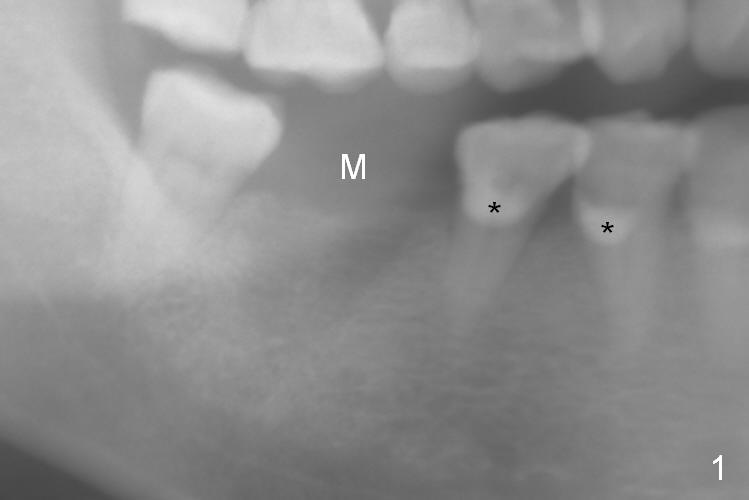
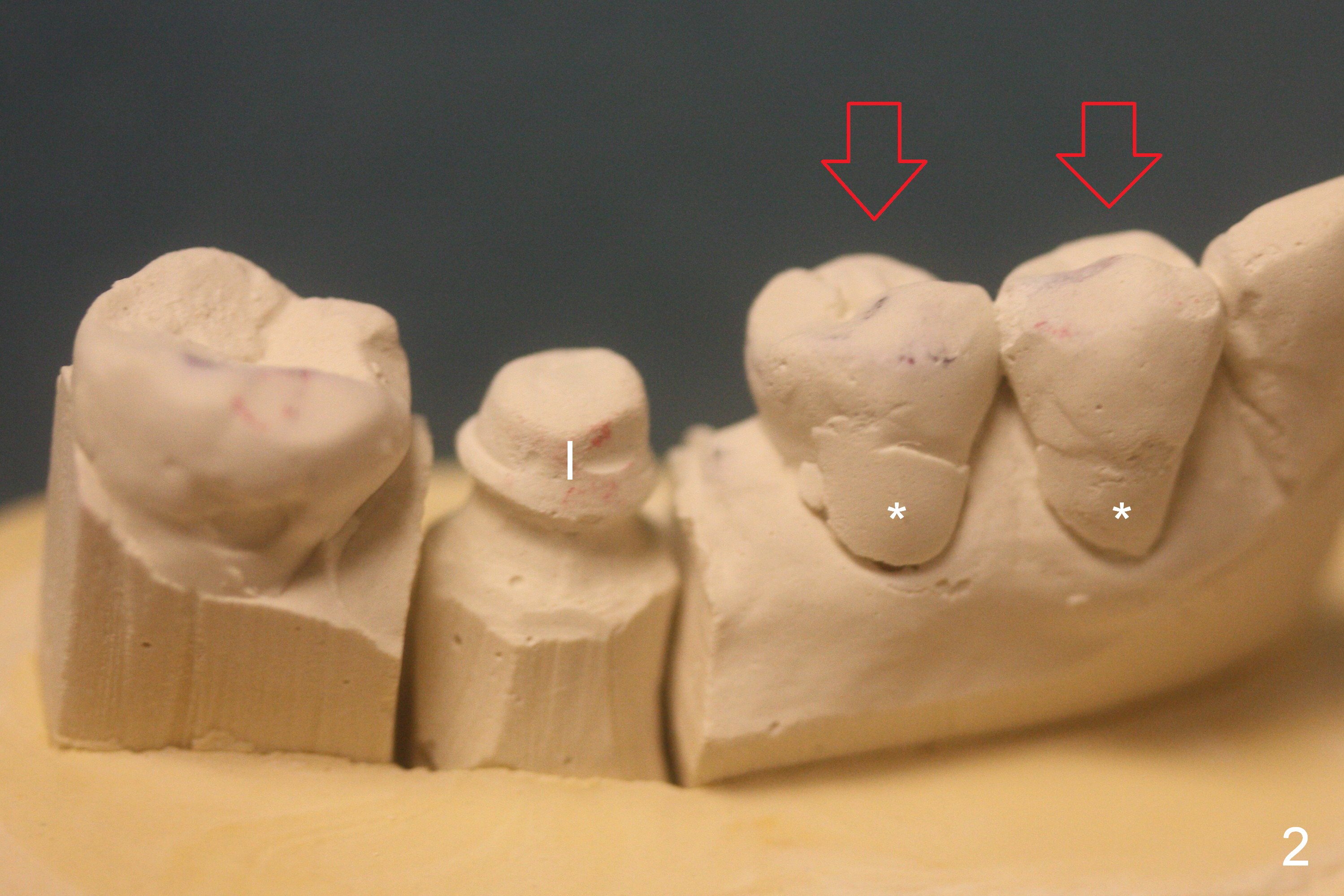
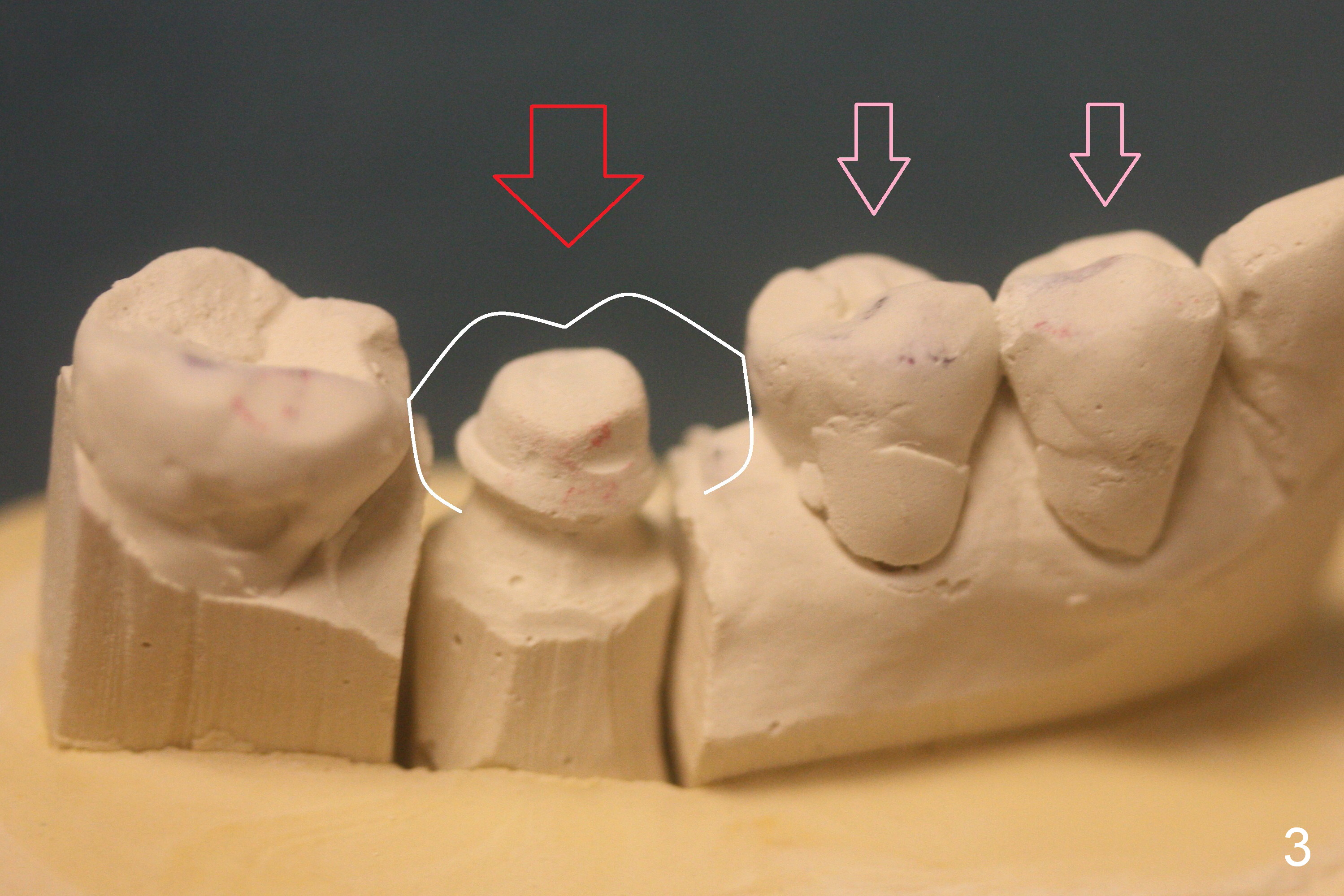
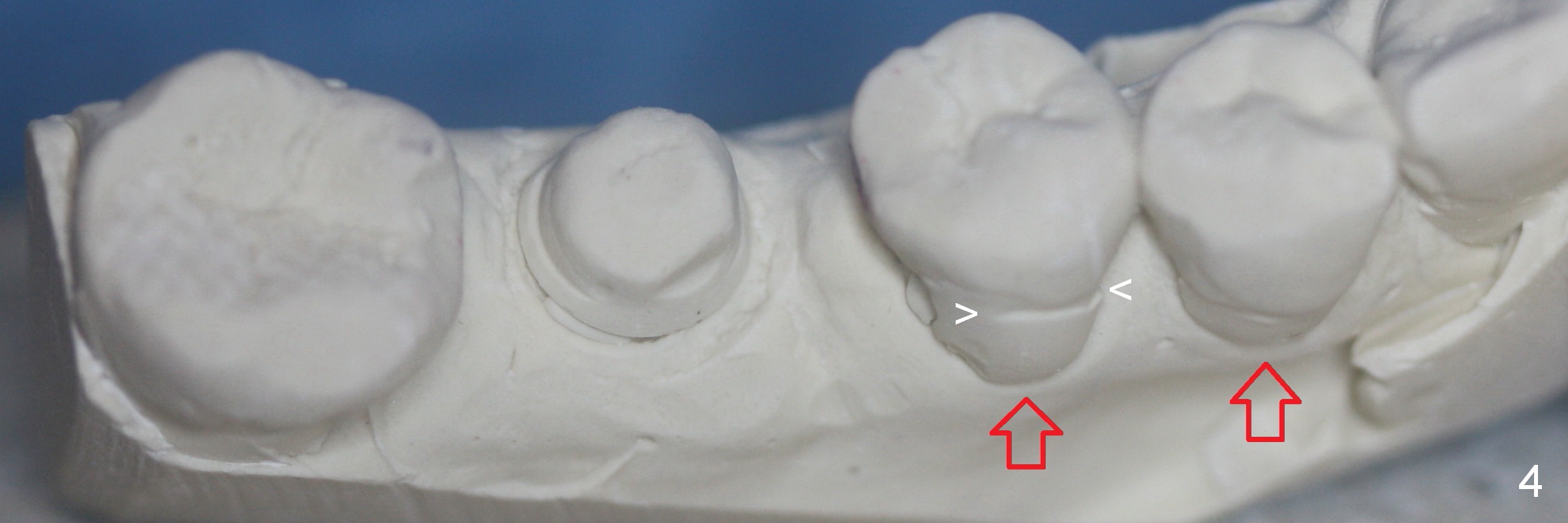
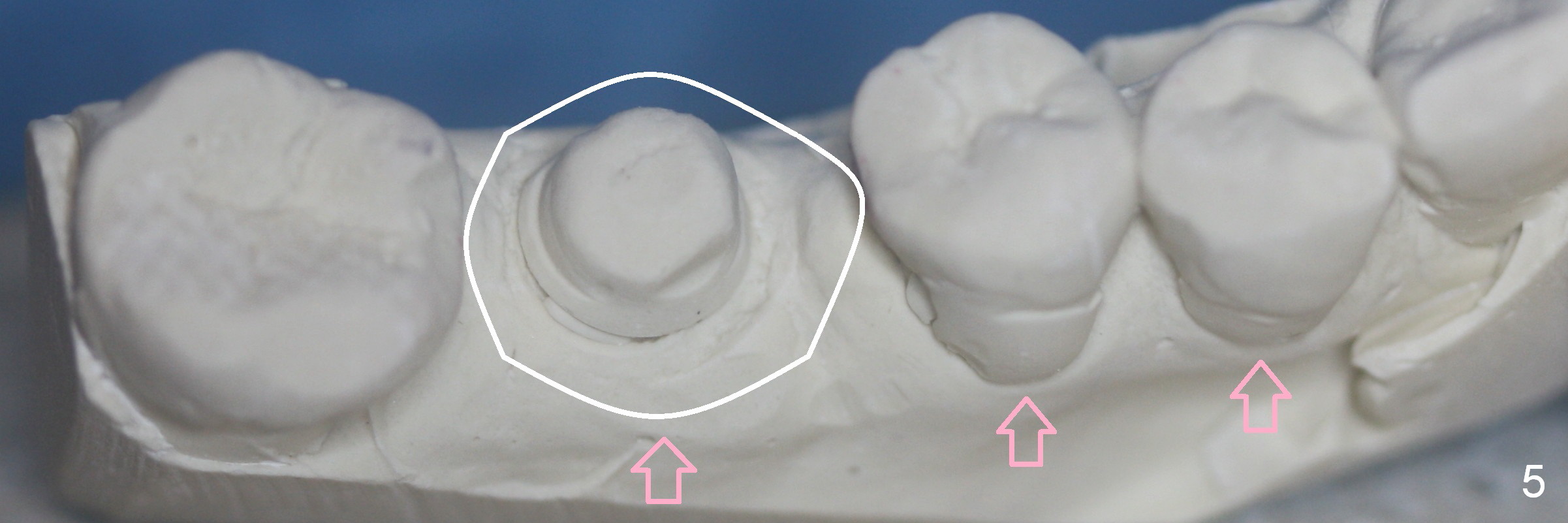
 |
 |
 |
 |
 |
Local Effect of One Missing Tooth
Mrs. Shen has lost a bottom molar tooth for a long time (Fig.1 M). Two neighboring teeth need two big fillings at the root area (Fig.1,2 *). When we lose a big tooth (molar), it is difficult to chew on that side. If we force to chew on that side, the neighboring teeth sustain extra force (Fig.2 red arrows, abuse). They undergo excessive wear and tear and therefore need fillings. Finally Mrs. Shen agrees to have an implant placed (Fig.2 I). When a crown is delivered over the implant (Fig.3 white outline), the chewing force will be mainly delivered to the molar tooth (Fig.3 red arrow); a minor amount of the force on the smaller, used-to-be-abused teeth (pink arrows). The wear and tear on them will be reduced.
Let us look at the model from the top (Fig.4). Before Mrs. Shen has the molar crown on, brushing force unavoidably concentrates on the root area of those little teeth (red arrows, causing wear and tear). Long after fillings are placed, a new groove can be formed again (Fig.4 white arrowheads). After the molar crown is cemented (Fig.5), the brushing force will be even distributed among these 3 teeth (pink arrows).
Local effect of one missing tooth cannot be ignored!
Return to Implant
Xin Wei, DDS, PhD, MS 1st edition 05/10/2016, last revision 05/10/2016